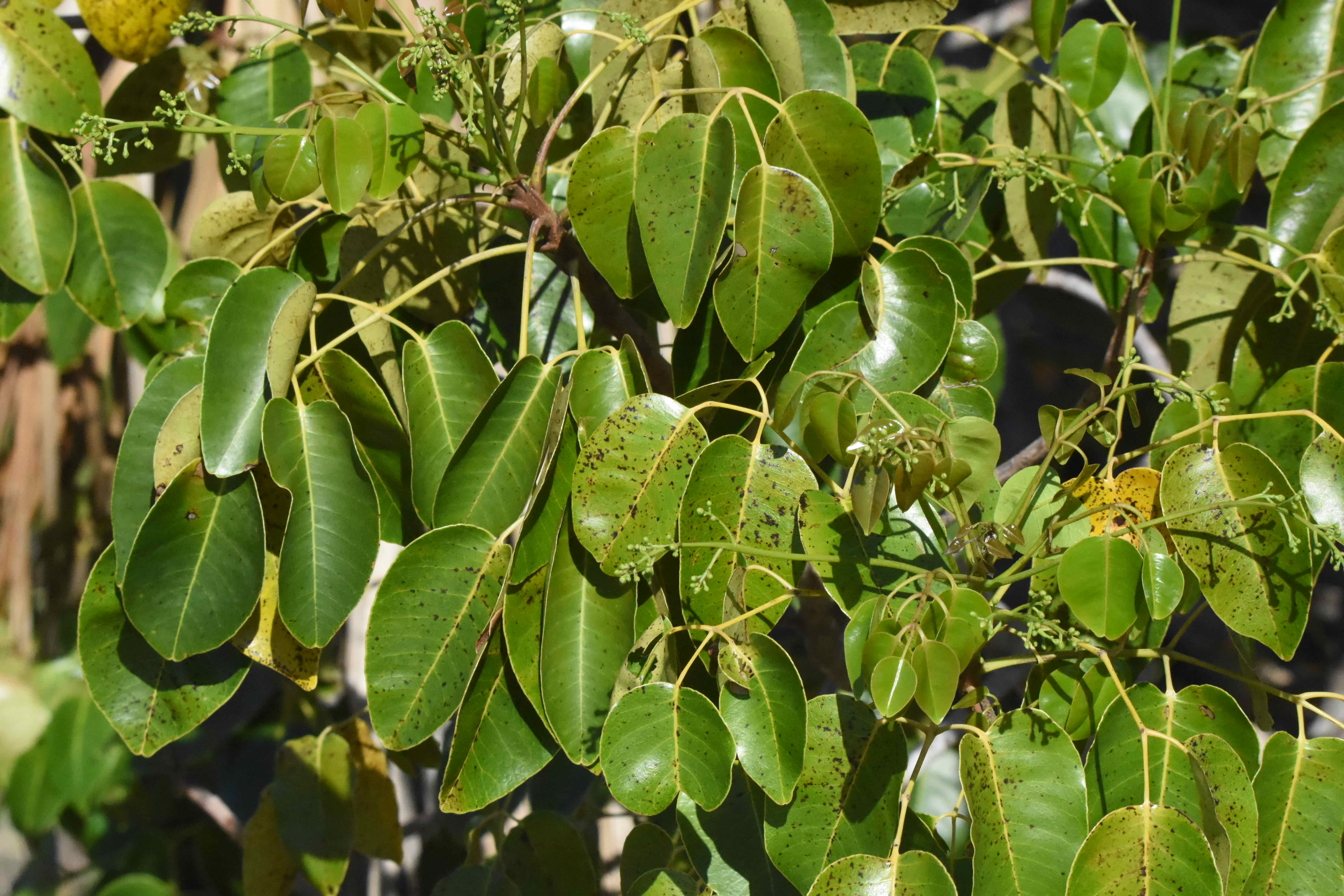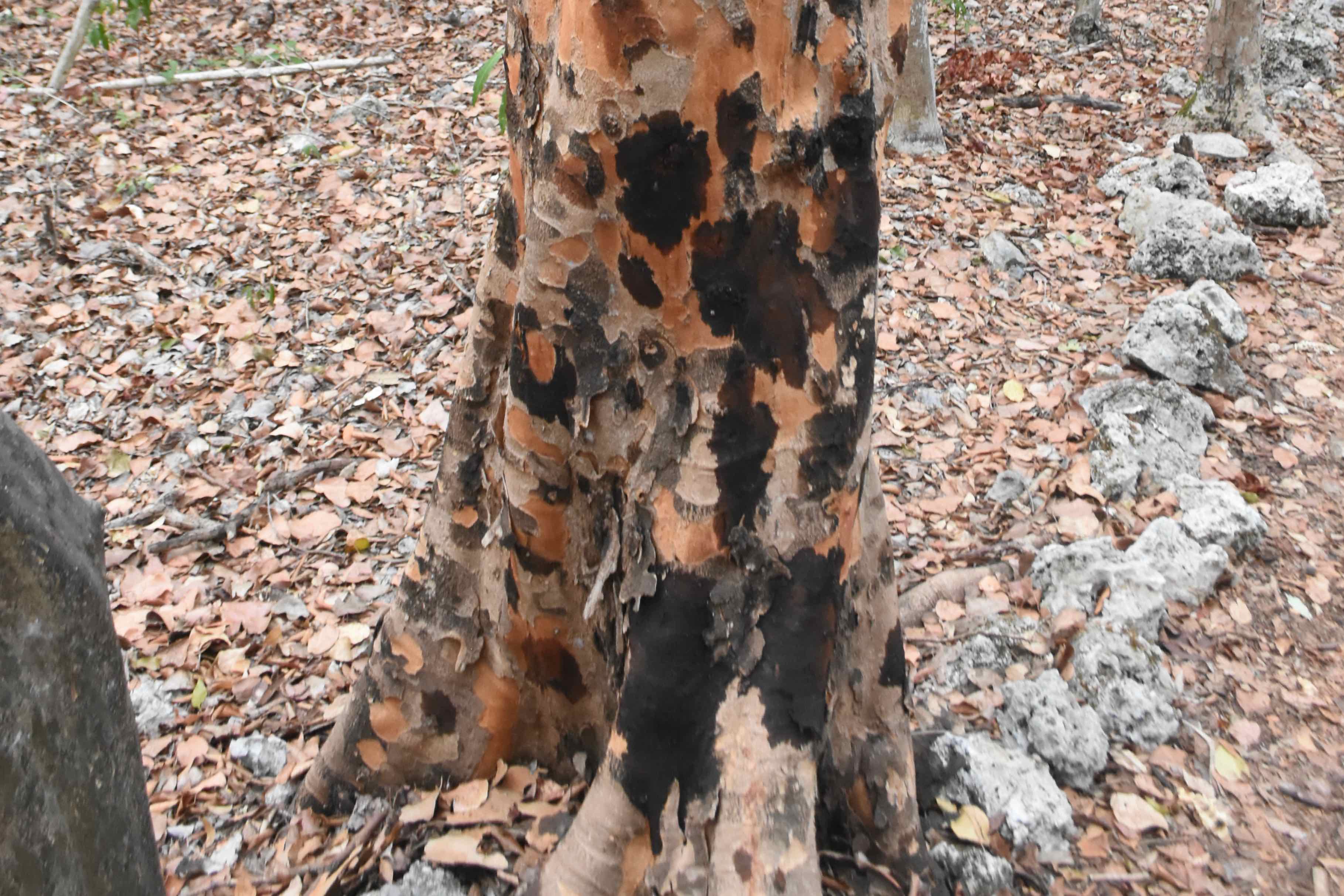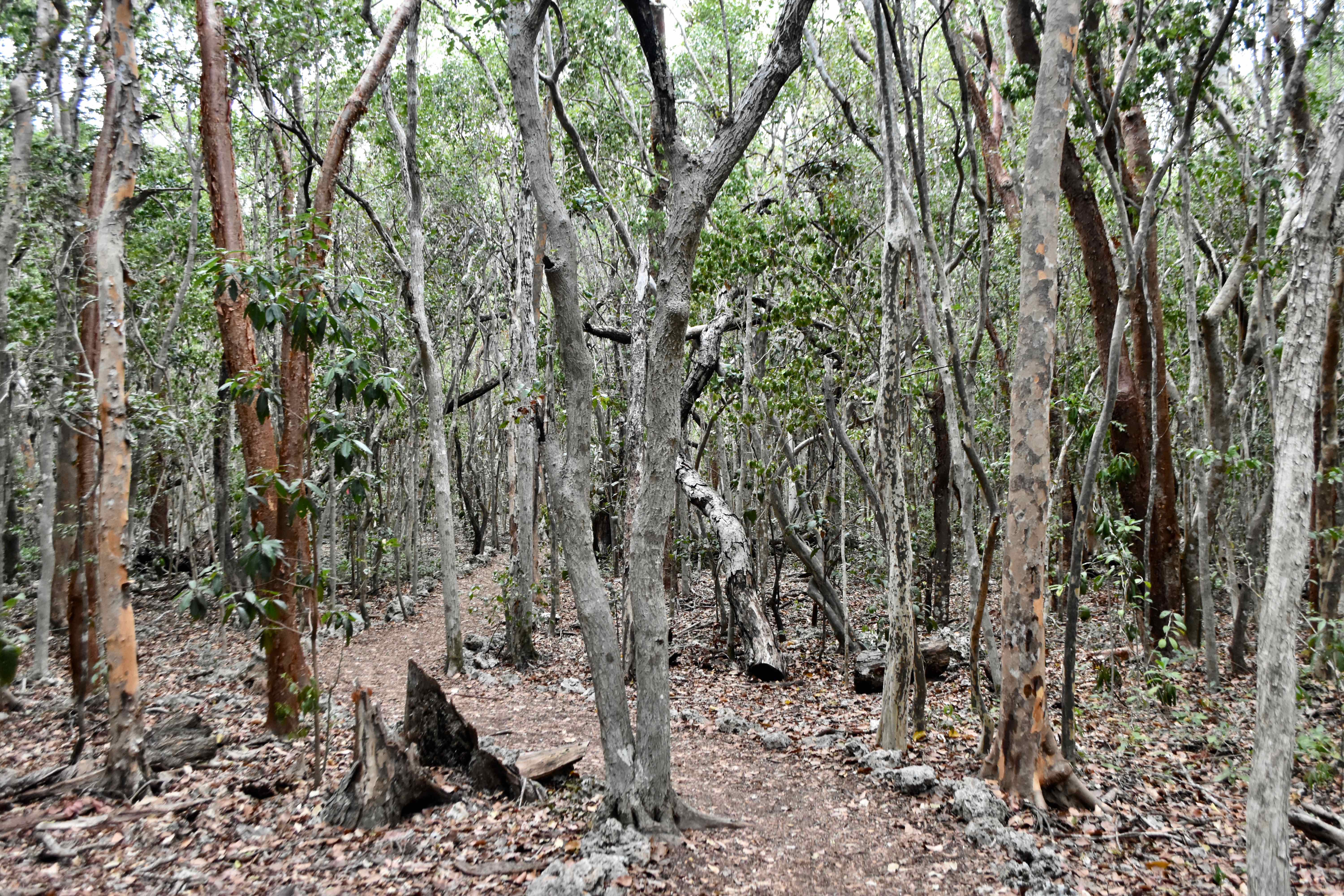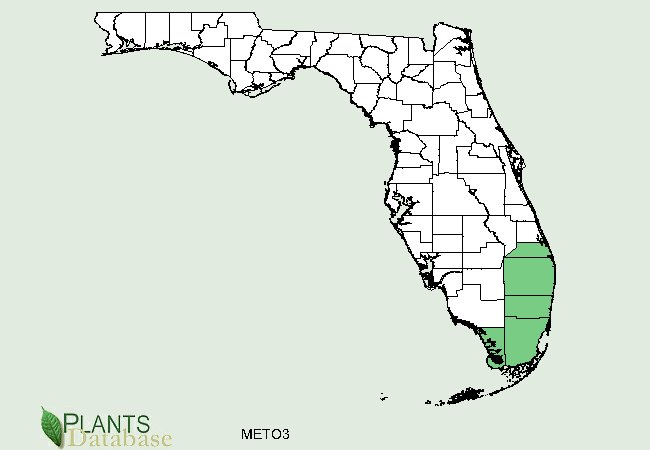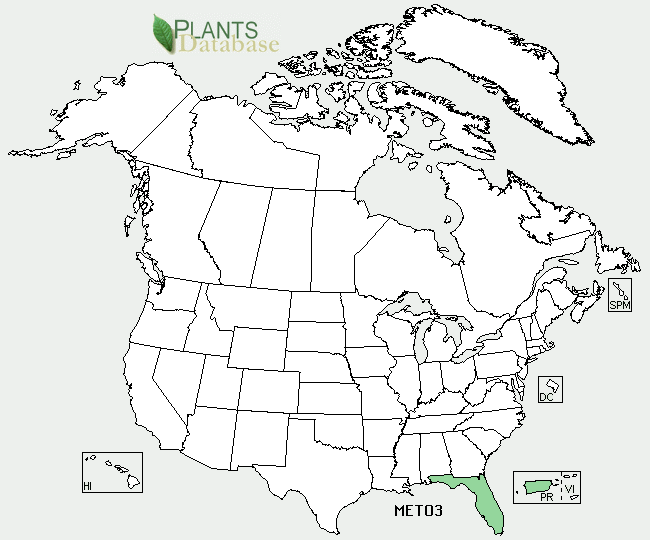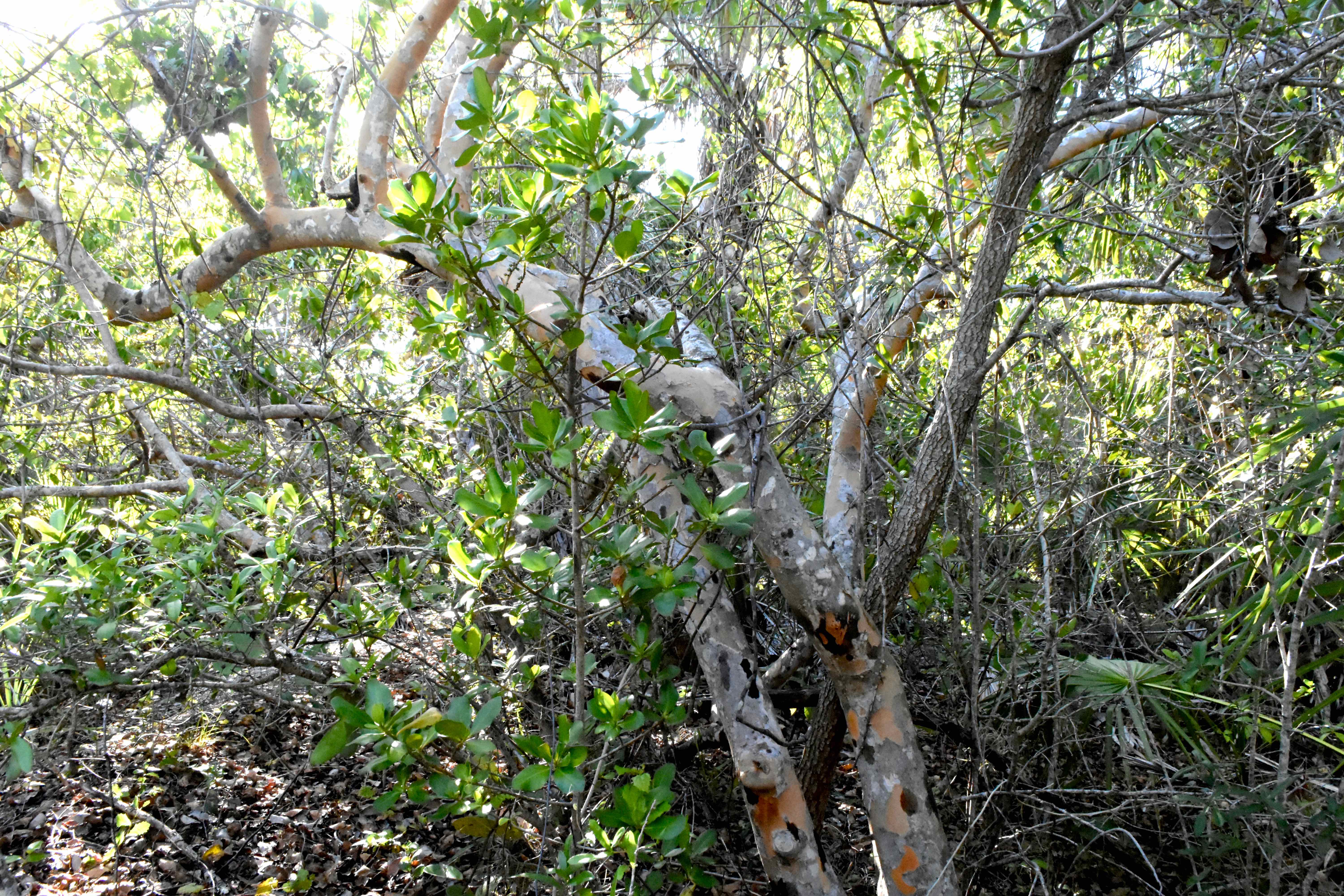
Poisonwood, photographed at Jupiter Lighthouse Outstanding Natural Area, Jupiter, Palm Beach County, in April 2018.
Unless you happen to be a white-crowned pigeon, poisonwood isn't something you want to mess around with, let alone touch. All parts of the tree contain oleoresin urushiol, the same skin-irritating compound that puts the poison in poison ivy; you don't even want to stand anywhere near this tree during or after a rainstorm, because skin contact with the water dripping off the leaves can give you a rash.
In one sense, it's much worse than poison ivy: the urushiol-containing sap is not water soluable and is difficult to get off your skin. Get it on your clothes, and they'll turn black when you wash them.
Poisonwood, Metopium toxiferum, is found throughout South Florida, as far north as Martin County, but it is particularly prevalent in Monroe County and the Florida Keys. Florida is the only state in the union where it grows, but it's also found in the Bahamas and much of the Caribbean, including Cuba and Puerto Rico. Habitats include tropical and coastal hammocks, pinelands and along shorelines near salt water. It likes full or part sun but does not tolerate salt water. It can grow as an understory shrub.
The tree usually grows to a height of 25 to 35 feet but can be as tall as 60 feet. Its bark is multi-hued, ranging from browns to reds to yellows and oranges, with smudgy-looking black blotches along the length of the trunk. Those blotches are urushiol resin that has oxidized. The blotches make the tree easy to identify. The leaves are compound, about 10 inches long, with three to seven oval-shaped leaflets that are shiny green above, paler below. Poisonwood leaves also have the blotches, the effect of which is one altogether ugly tree, at least in our eyes. Of course, the white-crowned pigeon and a few other birds that dine on poisonwood fruit seem to have a different opinion. The flowers are small, cream-colored and grow in clusters on the tree. The tree flowers year-round but peaks in the spring. The fruit is is an orange, half-inch berry, technically called a drupe. Each fruit has one seed.
Numerous birds eat the fruit, but the white-crowned pigeon is probably the one most associated with poisonwood, perhaps because the pigeon is endangered. Butterflies, including the giant swallowtail, Julia, mangrove skipper, large orange sulphur and Florida white, dine on its nectar.
Surprisingly, the sap of poisonwood is used in traditional medicine. According to Florida Ethnobotany by the late Daniel F. Austin, it's been used as an emetic (induce vomiting), purgative (clear the bowels), diuretic (increase the passing of urine), sudorfic (induce sweating) and as a seditive. It's also been used to remove aching teeth — the resin is applied to the offending chopper until the nerve dies. It's also been used to induce abortions.
But poisonwood notoriously is one case where the cure can definitely be worse than the disease. As the Leon Levy Native Plant Preserve on Eleuthera in the Bahamas puts it: "The species is well known for causing medical problems rather than solving it. The oils from Metopium toxiferum cause dermatitis ranging in severity from a red rash to intense blistering of the skin. A mixture of tea Metopium toxiferum leaves and twigs combined with bleach has been used to induce abortions but also has the tendency to kill the patient." Poisonwood is also cultivated, grown by several South Florida nurseries. But the Institute for Regional Conservation recommends it for natural restorations, not general landscaping.
Other common names for poisonwood include Florida poisonwood, black sap tree, coral sumac, doctor gum and hog gum. It is a member of Anacardiaceae, the sumac family, which includes poison ivy, poison oak and poison sumac as well as mango, cashew and pistachio trees.
Click on photo for larger image
U.S. Department of Agriculture Distribution Maps

Links for Poisonwood

